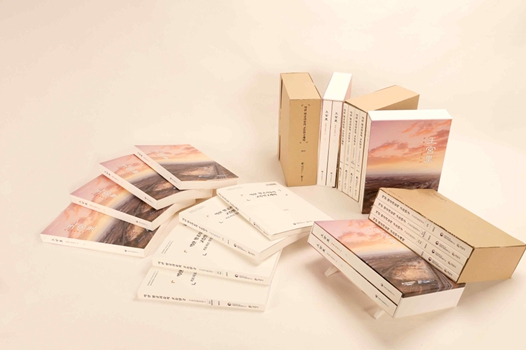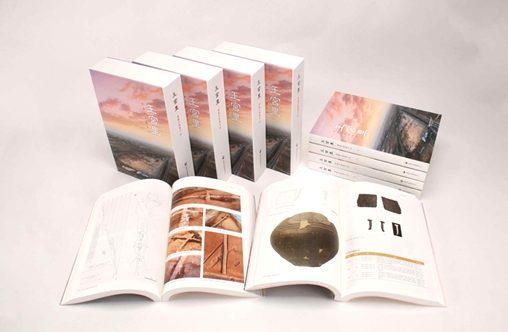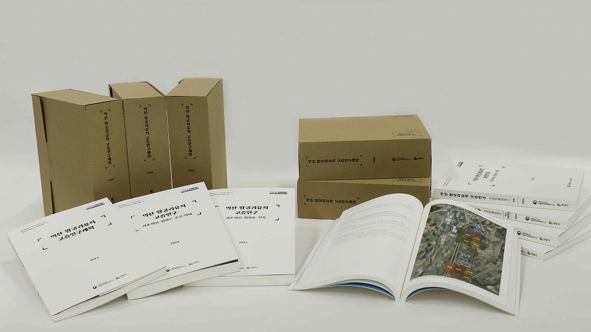The Outcomes of the 11th Excavation and Verification Research of the Iksan Wanggung-ri Site Released in Five Volumes.
The Korea Heritage Service, National Research Institute of Cultural Heritage, and Buyeo National Research Institute of Cultural Heritage (Director Lim Seng-kyeong) have published five volumes, including The Historical Research Plan of Wanggung-ri, Iksan, and Iksan Wanggung-ri Excavation Report XIV, summarizing the excavation results from 2017 to 2022, alongside the research plans and achievements across various disciplines.
*The published volumes include: 1. The Historical Research Plan of Wanggung-ri, Iksan 2. The Fundamental Data Collection about the Historical Research of Wanggung-ri, Iksan Ⅰ: Archaeology - History 3. The Fundamental Data Collection about the Historical Research of Wanggung-ri, Iksan Ⅱ: City - Restoration and Maintenance 4. The Fundamental Data Collection about the Historical Research of Wanggung-ri, Iksan Ⅲ: Architecture 5. Wanggung-ri Excavation Report XIV Key Contents of the Publications:
1. The Historical Research Plan of Wanggung-ri, Iksan
This report outlines a comprehensive verification research plan aimed at reevaluating the cultural heritage value of the Wanggung-ri Site, a UNESCO World Heritage Site, and faithfully restoring ancient Baekje culture. The research focuses on four key areas: Architectural Restoration and Verification, In-depth Archaeological Research, Site Maintenance Strategies, and Interdisciplinary Studies. The report also presents a detailed 15-year project for future implementation. * Architectural Restoration and Verification: Collecting and Comparing evidence to restore ancient architecture (structures) that no longer exist. * In-depth Archaeological Research: Classifying excavation data to analyze site formation processes and examine the nature and attributes of unearthed artifacts. * Site Maintenance Strategies: Developing methods for preservation and management of the site. * Interdisciplinary Studies: Collaborative research integrating fields such as history, archaeology, architecture, urban planning, landscape architecture, and civil engineering.
2. The Fundamental Data Collection about the Historical Research of Wanggung-ri, Iksan Ⅰ: Archaeology - History
This volume organizes existing research trends and issues from the perspectives of archaeology and history. It also analyzes the background of the construction of the palace, royal tombs, and temple built in Iksan during the Baekje Sabi Period, based on documentary evidence and verification studies. The compilation presents eight research topics, including the creation of a database for the archaeological materials unearthed at the Wanggung-ri Site, the study of its construction process, and research on its chronological transformations. * Construction Process: The methods and techniques used in constructing the site.
3. The Fundamental Data Collection about the Historical Research of Wanggung-ri, Iksan Ⅱ: City - Restoration and Maintenance
This volume examines the site's spatial structure, along with plans for restoration projects such as reconnecting ancient pathways and integrating surrounding areas. It examines the current status of site maintenance and visitor facilities and proposes future directions for site restoration, including exploring the feasibility of applying digital restoration models. * Digital Restoration Model: Utilizing digital technology to visualize the site’s features and create immersive, on-site experiences for visitors.
4. The Fundamental Data Collection about the Historical Research of Wanggung-ri, Iksan Ⅲ: Architecture
This volume compiles and catalogs research on ancient palace sites in Korea, focusing on architectural characteristics. It analyzes spatial layouts, changes in alignment, building site attributes, and building plans based on the excavation results of the Wanggung-ri Site.
5. Wanggung-ri Excavation Report XIV
This report summarizes the excavation results from 2017 to 2022, focusing on internal and external spaces in the southwestern and northwestern areas of the palace site. It details findings on large-scale filled grounds and their spatial usage patterns, insights into the site’s evolving landscape.
The newly published volumes have been distributed to national libraries and research institutions and made accessible to the public through the National Heritage Knowledge Portal of the National Research Institute of Cultural Heritage (https://portal.nrich.go.kr/).
The Korea Heritage Service, National Research Institute of Cultural Heritage, and Buyeo National Research Institute of Cultural Heritage remain committed to conducting systematic investigations and studies on the Wanggung-ri Site, a UNESCO World Heritage Site, to further elevate the global significance of Korea’s cultural heritage.








